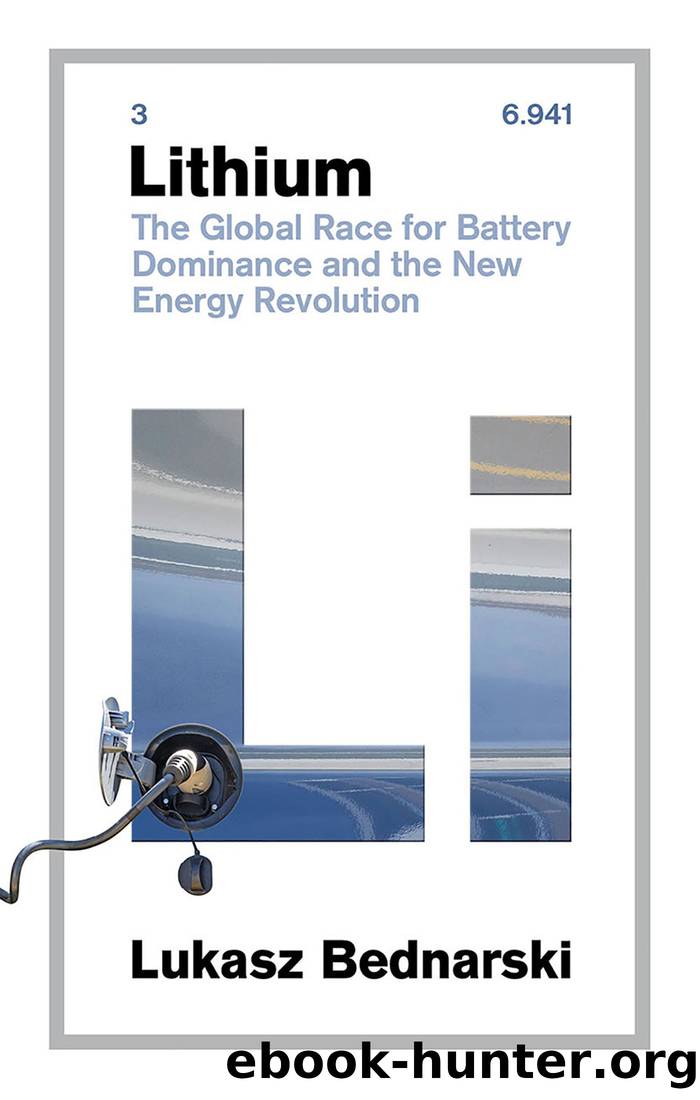Lithium by Lukasz Bednarski

Author:Lukasz Bednarski
Language: eng
Format: epub
Publisher: Hurst
Published: 2021-10-15T00:00:00+00:00
5
ARE WE REALLY MAKING THE WORLD A BETTER PLACE?
You have guns, you donât need a salary1
Mobutu Sese Seko (President of DR Congo 1965â1997)
Lithium is not a conflict mineral. You will not find a place in the world where revenues from lithium mining support activities of armed groups. Lithium is also not mined artisanally or by children. Due to the geographical locations of the deposits and the complexities of the lithium mining process this is unlikely to change. The same cannot be said of the second most important metal used in batteriesâcobalt. Around 60 per cent of the cobalt supplied on the global market comes from the Democratic Republic of the Congo, a Central African country plagued with problems.2
Congo typically ranks at the very end of global indexes measuring quality of life, easiness of doing business, literacy or GDP per capita. It makes the top, however, in rankings of the most corrupted countries on earth. The conflict that it experienced between 1998 and 2003 has often been referred to as the Great African War due to the sheer number of state and non-state actors involved and the casualties suffered. Even though the war has officially ended, it left a number of non-state armed groups still operating (as of 2020), and inflicted a lasting mark on the psyche of Congolese society.
Congoâs area is roughly the size of Western Europe, while the number of its population is close to that of Germany. Prolonged conflicts and diseases led the median age of the Congolese to oscillate around eighteen. The countryâs capital, Kinshasa, is situated in the very west, whereas the middle is covered by impenetrable forests. The east, abutting Rwanda, has for decades been a theatre of guerrilla warfare, sometimes increasing and sometimes decreasing in intensity. The usable roads in DR Congo are scarce and most of the population travels across the country using a network of ferry crossings and air transportation. The lack of infrastructure, together with natural barriers such as jungle, swamps and water bodies, makes it difficult to keep the country united, and limits the reach of the capital over eastern parts. It also leads to regional particularism of the Congolese political scene. The relative weakness of the current president, Félix Tshisekedi, is often explained through a lack of support from any of Congoâs twenty-six provinces. His predecessors, as well as most of the heavyweights of Congolese politics, typically enjoyed a strong regional power base.
But we are interested the most in the south-western part of the country, where an amazingly rich copper-cobalt beltâ300km long and 30km wideâis situated.3 The terrain is in what was for decades a Katanga province, until in 2006 President Joseph Kabila, in desperate efforts to hold on to power, further divided the countryâs provinces, splitting up Katanga into Tanganyika, Haut-Lomami, Lualaba and Haut-Katanga provinces.
Katanga has been a hotbed of geopolitical activity for a long time. Its riches greatly contributed to increasing Belgian wealth through the company Union Minière du Haut-Katanga, which operated on the copper belt from the beginning of the twentieth century up until the 60s.
Download
This site does not store any files on its server. We only index and link to content provided by other sites. Please contact the content providers to delete copyright contents if any and email us, we'll remove relevant links or contents immediately.
| Natural Resource Extraction | Oil & Energy |
Life 3.0: Being Human in the Age of Artificial Intelligence by Tegmark Max(5198)
The Sports Rules Book by Human Kinetics(4084)
The Age of Surveillance Capitalism by Shoshana Zuboff(4001)
ACT Math For Dummies by Zegarelli Mark(3858)
Blood, Sweat, and Pixels by Jason Schreier(3502)
Unlabel: Selling You Without Selling Out by Marc Ecko(3478)
Hidden Persuasion: 33 psychological influence techniques in advertising by Marc Andrews & Matthijs van Leeuwen & Rick van Baaren(3306)
Urban Outlaw by Magnus Walker(3250)
The Pixar Touch by David A. Price(3225)
Bad Pharma by Ben Goldacre(3110)
Project Animal Farm: An Accidental Journey into the Secret World of Farming and the Truth About Our Food by Sonia Faruqi(3030)
Brotopia by Emily Chang(2904)
Kitchen confidential by Anthony Bourdain(2840)
Slugfest by Reed Tucker(2809)
The Content Trap by Bharat Anand(2786)
The Airbnb Story by Leigh Gallagher(2711)
Coffee for One by KJ Fallon(2435)
Smuggler's Cove: Exotic Cocktails, Rum, and the Cult of Tiki by Martin Cate & Rebecca Cate(2344)
Beer is proof God loves us by Charles W. Bamforth(2256)
